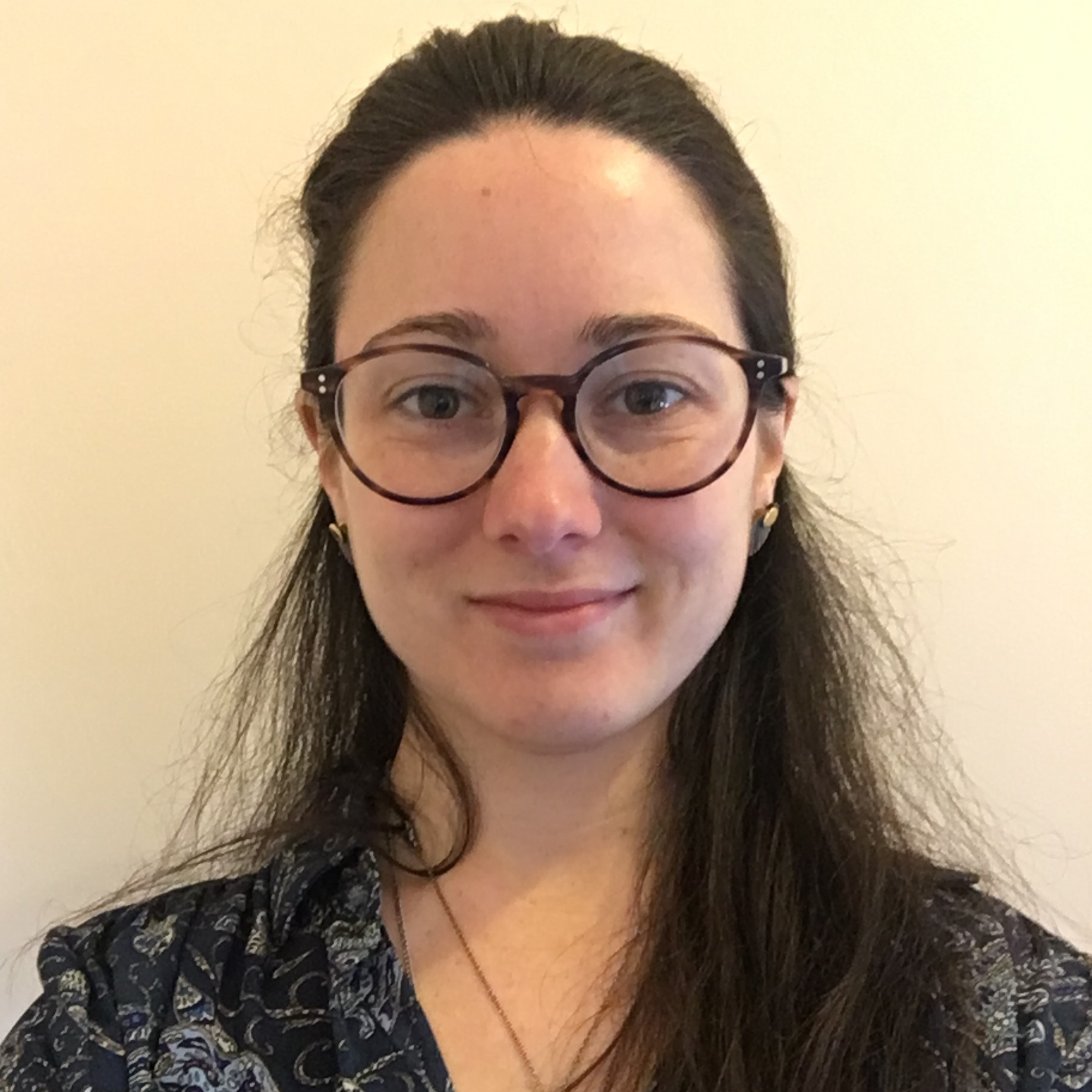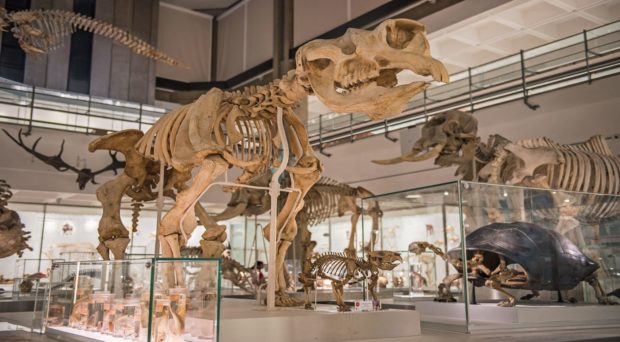Placement student Almudena González Gallego talks about her summer behind the scenes of the Museum of Zoology, and her experiences from public engagement to collections and conservation.
I am a 24 years old graduate in History of Art by the Spanish University of Zaragoza, located in northern Spain. I came to Cambridge to do a Student Placement as part of my Master’s degree in Cultural Heritage Management at the University Museum of Zoology Cambridge (UMZC), where I have been involved in many different projects in various departments of the museum.
Working in an institution with such a strong scientific character gave me the chance to experience a different atmosphere as well as the opportunity to know about the management of the cultural industry in England.
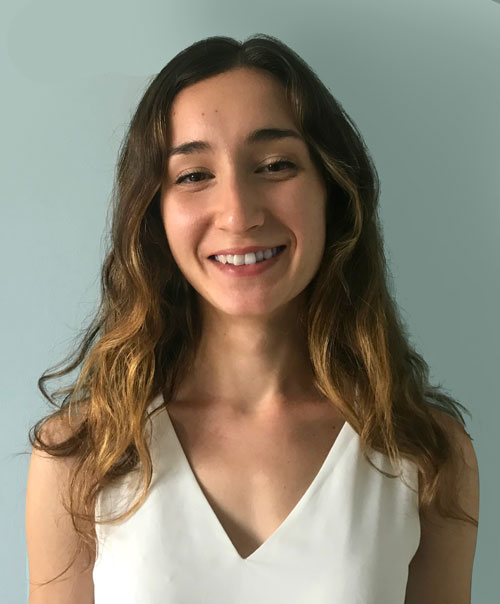
Why did you decide to come to Cambridge?
During my degree in History of Art I had the chance to move and study in Rome at LUMSA University (Libera Università Maria SS. Assunta) for one year. It was there when I realised I wanted to live different experiences overseas, to acquire more knowledge in the cultural industry and to challenge myself, and I thought about England!
That is why as soon as I finished my degree I started studying a Masters being sure that what I really wanted was to come to the United Kingdom for my student placement. I started contacting all the museums, galleries and auction houses that I found interesting both in London and Cambridge, and after two months of searching, the Zoology Museum contacted me. So I came to Cambridge to have an informal chat with the volunteer coordinator of the museum in February 2019 and I moved to Cambridge in April where I started my Student Placement on 7th May!
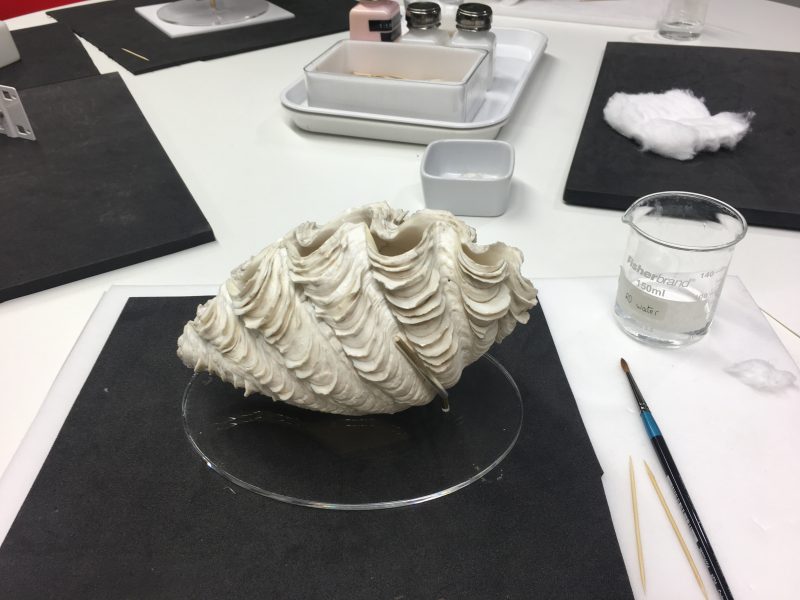
Which were your goals before starting the student placement?
I was very excited about coming to Cambridge and pride myself in liking to new atmosphere. However, I had some objectives I wanted to achieve, as acquiring experience in the cultural industry in England or getting to know the management of a museum of the University of Cambridge, among others.
How were your first few weeks at the museum?
When I first got to the museum, I did not know much about its management and the staff that work there, so the first weeks I tried to adapt quickly to the new routine and to undertake the projects I was asked to do in the best way possible. The tutor of the student placement, Sara Steele, edited a spreadsheet with the daily schedule of the tasks to do. This helped both of us to organise my time on the projects.
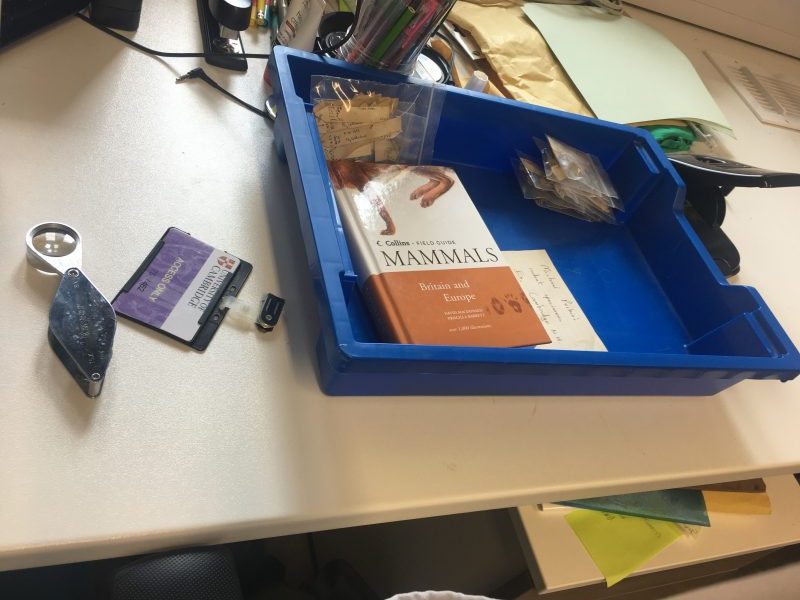
Which projects have you been involved with?
During the Student Placement at the UMZC I had the chance to work in different departments of the museum being involved in various projects: from helping clean and restore delicate specimens with the conservation team to working with the database and inputting all the sampling forms recorded since the end of the twentieth century.
I worked with the Learning Team on assisting in preparing the activities for the events as well as attending them both in the galleries of the museum and in different areas of the city. I also helped them by doing administration tasks like inputting feedback from the event into the museum database or organising statistics and creating a spreadsheet with the essential information about subject for the funders of the museum.
I also worked on preparing the Zoology Club’s welcome packs by assembling and then sending them via post to every kid that had signed up to the Zoology Club. Everything was done with care and attention to ensure that the youngsters would leave happy and have a long lasting, good impression of the museum.
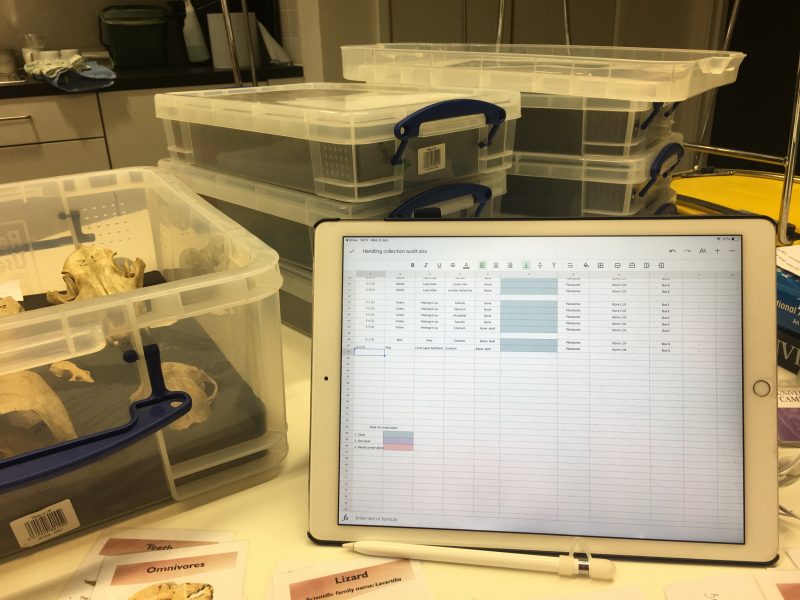
I was responsible for the organisation of the Handling Collection used mainly by the Education Team of the museum to take to schools, events or museum galleries. My job was to create a spreadsheet in which I introduced all the information relating each specimen with its characteristics. It took about three months to finish it, but it was very satisfying to see all the collection organised and catalogued. Furthermore, it was a task that needed doing for museum accreditation.
However, the task I enjoyed the most was designing posters for future talks and events which were placed in the galleries. This project let me use my creative skills and gave me the chance to learn how to use design software. Seeing the posters hanging in the front of house gave me satisfaction and made me realise about the importance of communicating information in a visual way.
I had the chance to assist the Collection Manager, Mathew Lowe, by helping him with four projects that require the use of the database Ke Emu. The most interesting ones were: firstly, the “Cichlid project” based on a list of 1226 specimens collected by the Sanger Institute in 2016. As all the details of each specimen had been already inputted into the Database, my task was to add the photograph of each species to Ke Emu according to the identify number established by the museum.
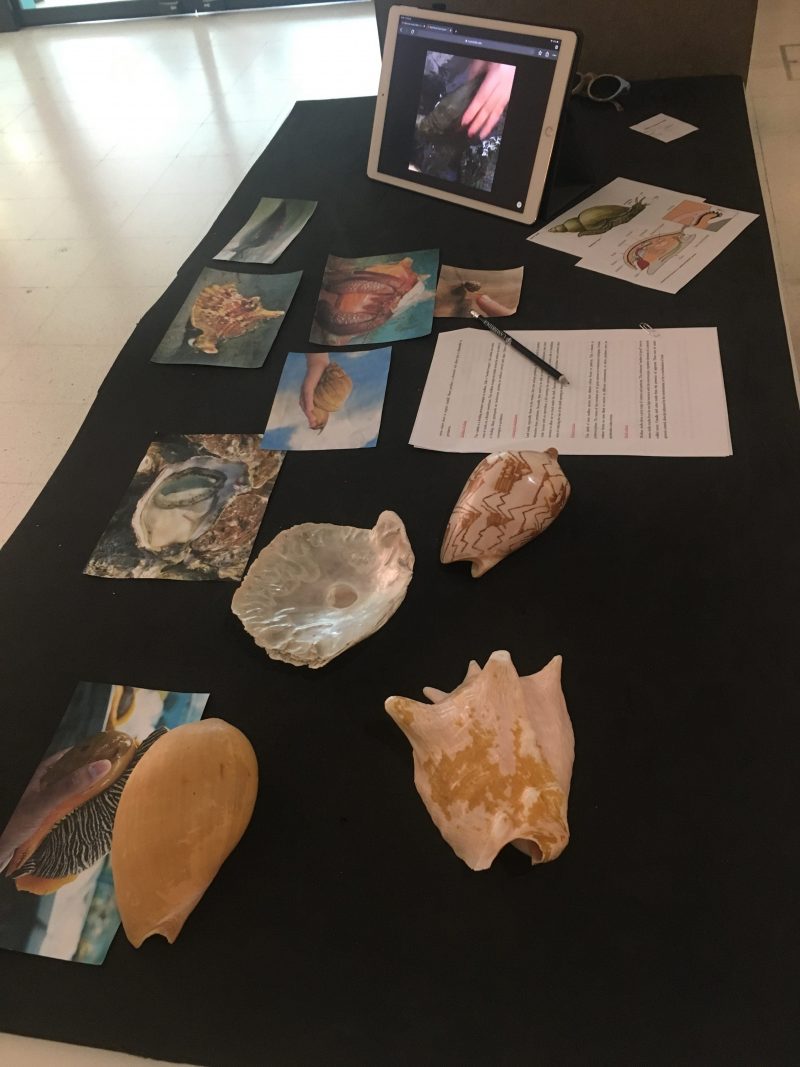
Secondly, the “DNA Sampling project”. When someone is interested in researching about a specific specimen from the UMZC they need to fill out a form with their personal details and the specimen number they would like to investigate. My role was to place all the sampling form records since the end of the twentieth century into the database. This project was one of the most pleasing projects I did at the museum because it made me realise how many people from all over the world are interested in the collections of the UMZC.
I also had the opportunity to work with the Conservation Team to help clean and restore delicate specimen from the Handling Collection, as well as doing Facility Reports of new specimen entries and checking if there was any insect infestation. This task helped me realise why pest management is important in museum and heritage sites to preserve either the collections and the monuments.
How would you value your experience at the UMZC?
I feel very fortunate to have done my student placement in an institution like the University Museum of Zoology Cambridge. I have had the chance to learn about different aspects and departments of the museum and I have also acquired excellent experience in the cultural industry in England. I would like to thank the stuff from the museum who have always been very kind to me. Especially, the tutor of my student placement, Sara Steele who, thanks to her dedication I have been involved in many different projects to help me learn as much as possible. I would also like to thanks Matthew Lowe for the interest he has always shown in helping with the projects and the doubts I had related to my professional career.
Doing the student placement in a foreign institution has helped me grow professionally and has also meant a personal challenge that I could overcome successfully and that is why I feel proud of myself.
What did you do when your student placement finish?
After doing the 200 hours, I focused on finishing the thesis for my Masters. In the meantime, I used to go to the Zoology Museum to finish some projects and I have also started volunteering at Kettle’s Yard.
Would you like to stay in Cambridge once your Masters is finished?
I would not mind staying in Cambridge or and acquire more experience in the museum industry. I find very interesting the way culture is managed in England. However, I am open to travel and experience somewhere different.
Sara Steele, the Museum’s Education Assistant, reflects:
It has been an absolute pleasure having Almudena with us this summer. She has been a valuable member of ‘Team Zoo’ and not only tackled each task with enthusiasm and dedication, but has been an asset to the team in bringing her design skills with her. The tasks Almudena has worked on will have long-lasting impact on our work, from cataloguing long-awaiting records to creating marketing poster templates and condition accessing our handling collection. I would encourage colleagues who can to take on other Masters students like Almudena, as the experience is valuable for both them and the museum. My advice is to make small projects out of all of those tasks you have wanted to do for so long, and you will be surprised at how much they can get done with their enthusiasm alone.

